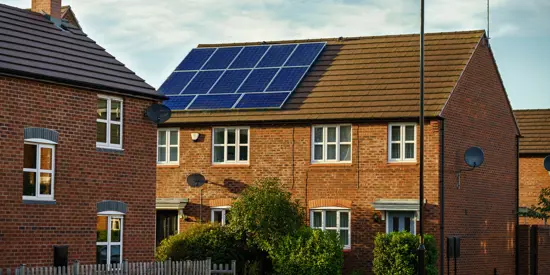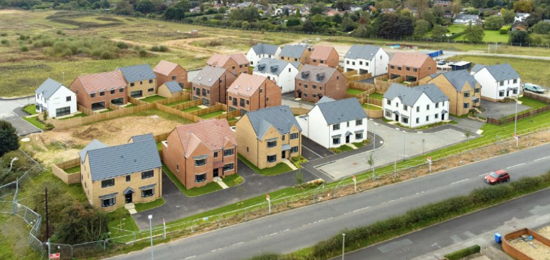The power of partnership - how to turn a good deal into a great one
The best development deals are never just a financial transaction. They should be a partnership between broker, borrower and lender.
And that partnership is never more vital than when the market is going through a period of strong potential but rapid change, like it is right now.
Of all the gravity-defying data points from the latest Land Registry data, to my mind the most striking is this – in February the average UK home was worth £27,000 more than it was a year ago.
When the average home is ‘earning’ more in a year than the average worker takes home in pay, you don’t need an economist to tell you that property prices have decoupled from economic reality.
House prices can only outstrip earnings for so long before there’s a reality check. Add in the cost of living crisis, which is slicing into people’s disposable income and leaving buyers with less to spend on a home, and the current pace of price growth – and by extension, Gross Development Values – starts to look unsustainable.
After the Great Relocation, the Great Readjustment
The estate agent Knight Frank predicts that house price inflation will slow to 5% in 2022. That’s well under half what it was in the 12 months to the end of February.
And while few doubt that a slowdown is coming, in my view the brakes will be applied unevenly depending on location and property type.
New builds are likely to hold up better than existing stock, but dig deeper and things are likely to diverge a lot. For instance, town centre developments and those with post-pandemic must-haves like open-plan living and outdoor space will do far better than shoebox-style out of town schemes.
At Atelier we’re watching the evolution of Gross Development Values closely, as homebuyers’ tastes evolve. Increasingly the rule of thumb for identifying a new development’s buyer appeal won’t just be ‘location, location, location’ but also ‘product, product, product’.
For now though, all this uncertainty means projecting an accurate GDV is harder than ever.
The double-digit surge in house prices over the past year has been both impressive and dizzying. So while buyer demand remains strong and there are some compelling development opportunities out there, developers need to be wary of making the same sort of optimistic sale price predictions they could at the start of 2022.
The other moving target
Get your boots muddy on any construction site and you’ll hear one thing amid the din of machinery – the punishing pace of material price rises.
Build costs enjoyed the briefest of respites at the start of 2022, but Russia’s invasion of Ukraine has turned back the clock.
Both countries were previously major steel exporters, and the conflict’s economic fallout has impacted the global supply of structural steel and sent prices soaring.
Meanwhile the surge in energy prices is making energy-intensive materials like concrete and glass dramatically more expensive to produce. Add in record high fuel prices that make transporting everything more costly, and the danger to developers is clear.
Price pressures are now so severe that some developers aren’t just looking at squeezed margins. In the space of a few weeks, surging build costs can turn a viable scheme into a loss-maker.
In March we teamed up with Paragon Building Consultancy to poll more than 100 developers and surveyors about how these pressures are playing out on the construction front line. An alarmingly high proportion – almost a third – had seen projects put on hold over the past 12 months as a direct result of build cost volatility.
‘You make your money on the way in’
The current perfect storm of cost pressures might be new, but the wisdom of the old property developer’s adage is as true as ever.
When you’ve got such extreme volatility in both GDV and input costs, developers’ plans need thorough scrutiny right from the start.
Responsible lenders and brokers need to work together, asking searching questions about the land value, whether a scheme can truly be built for what the developer has budgeted, and, when complete, whether it’ll be worth what they predict.
I’ve worked with some superb brokers over the years, and it’s at times like these that they come into their own.
The best are fastidious and fearless in equal measure. They’re willing to roll up their sleeves and delve into the numbers, and they’re unafraid of the difficult conversations, highlighting the hurdles, mitigating the risks, and refusing to tell would-be borrowers only what they want to hear.
For our part, we take a similar approach at Atelier. Our in-house monitors will pore over every decimal place in the costings, but we move quickly and decisively to offer finance when we see a well-planned, well-costed and saleable scheme.
Above all, we never treat a prospective deal as just a transaction. We see it as an ongoing partnership between broker, borrower and Atelier. That’s why Atelier clients have direct access to the lending decision-maker during the application phase, and to an experienced loan manager during drawdown.
Simple and certain, right from the start
Amid the fog of uncertainty around GDV, build costs and developer margins, there’s one variable that can be controlled – the cost of finance.
Developers with fewer grey hairs than me may never have worked in an era of sharply rising interest rates. The Bank of England base rate has been below 1% for more than 13 years, but in historical terms this is an anomaly.
With consumer inflation already at 7%, and set to climb higher, the Bank is widely expected to push up interest rates further to put a lid on rising prices. To give you an idea how far and how fast rates might rise, the last time inflation was this bad, in 1992, they stood at 10%.
For much of the past decade, brokers and developers might have been forgiven for taking a punt on interest rates. But failing to fix your interest rate in the current market is an unnecessary risk.
At Atelier, we believe the solution is obvious: we’ve been making the case for fixing interest rates since our inception. That’s why all our loans don’t just offer highly competitive rates of interest; our rates are always fixed for the full term too.
In the past month, we’ve noticed others are spreading the gospel too.
More and more brokers I speak to have come around to the idea, knowing that while they can’t wave a magic wand at inflation, they can at least offer developers certainty over one thing – their borrowing costs.
In fact, right now borrowing costs may be the only thing developers can control.
There’s still huge momentum, and great opportunities to be had, in the market. But with both the GDV and build cost sands shifting, projects need to get off on the right foot – with certainty over their finance costs.
Go fixed and you’ll go far.


